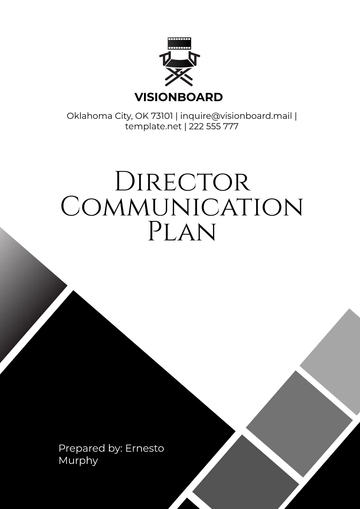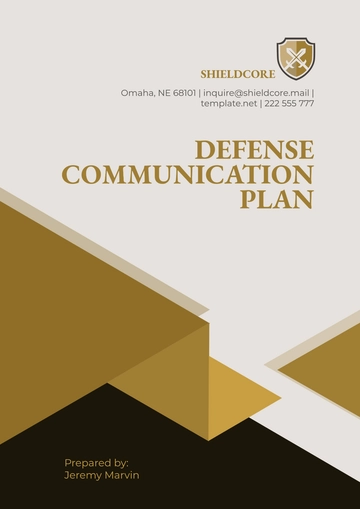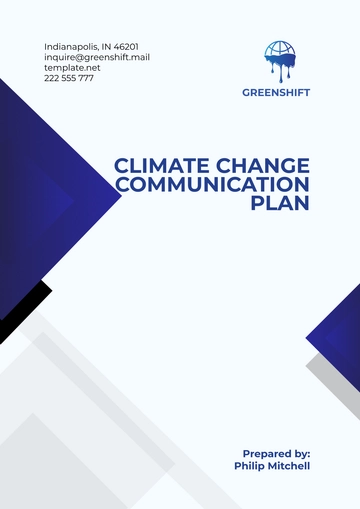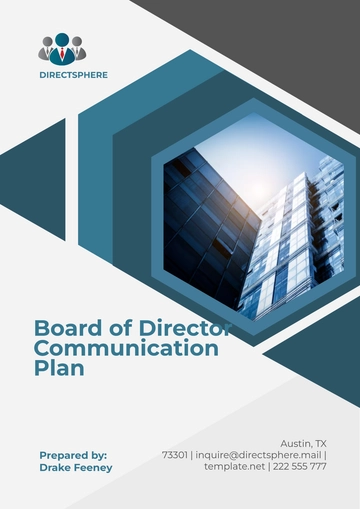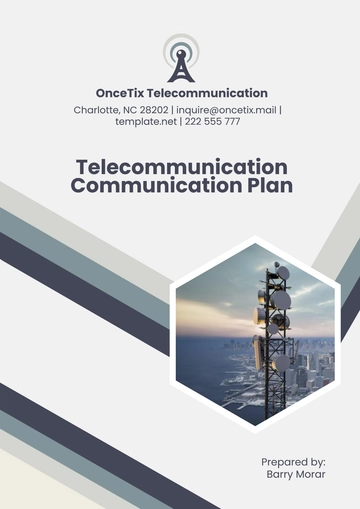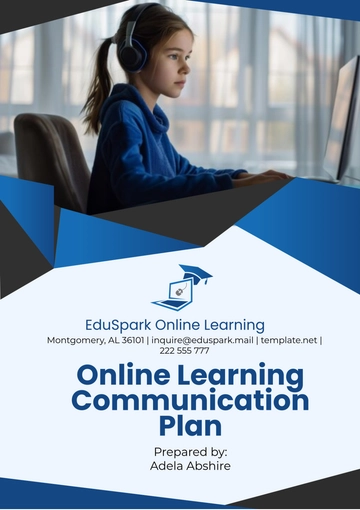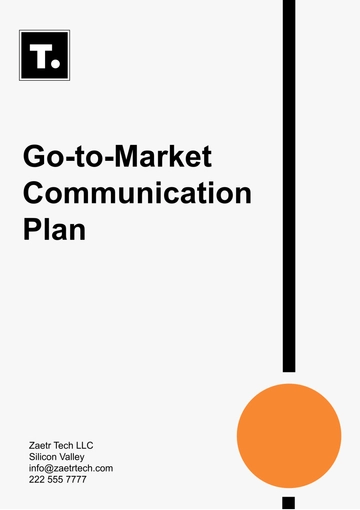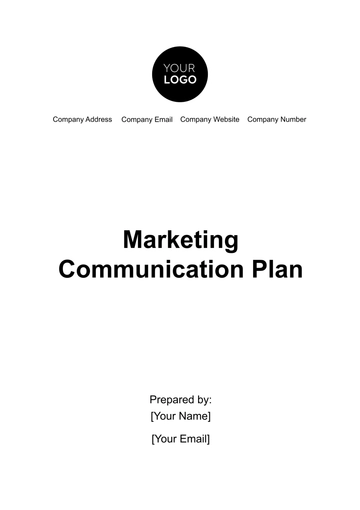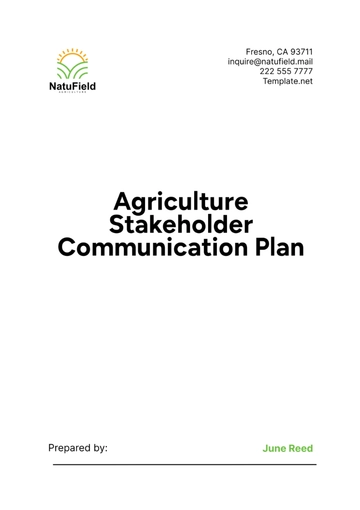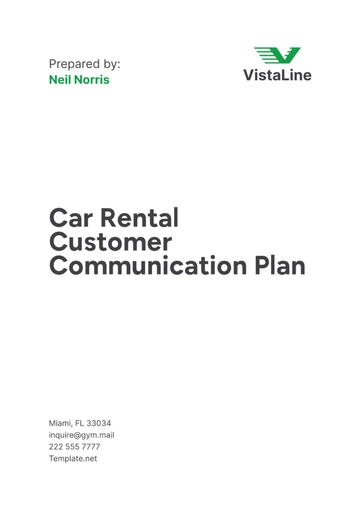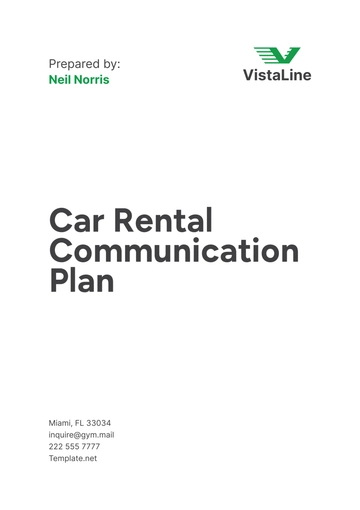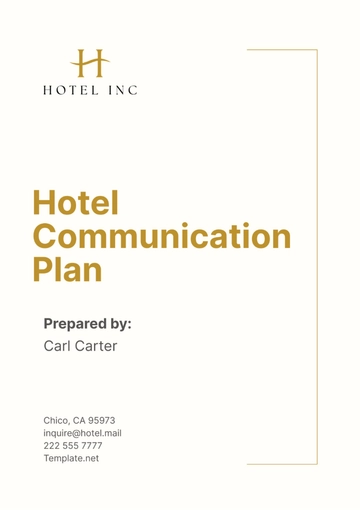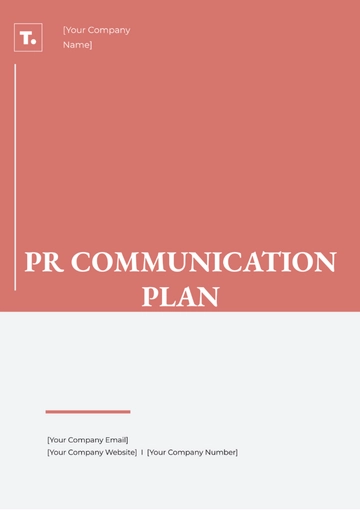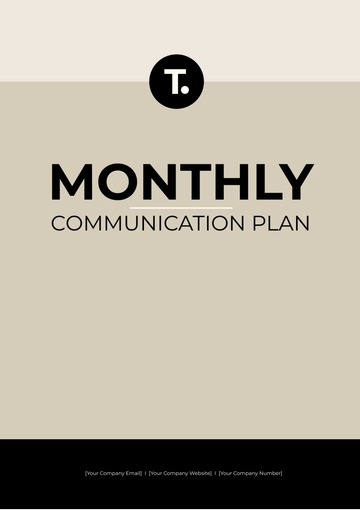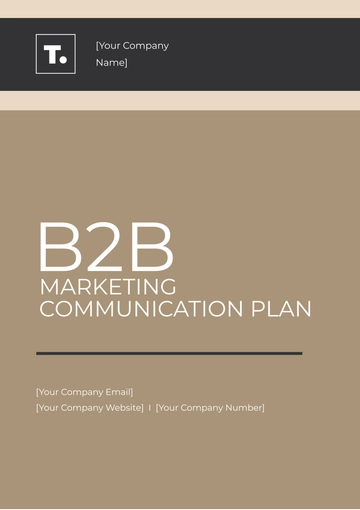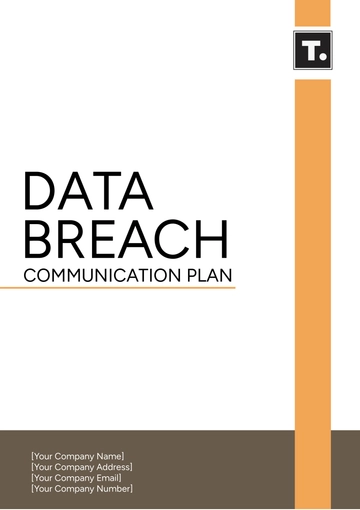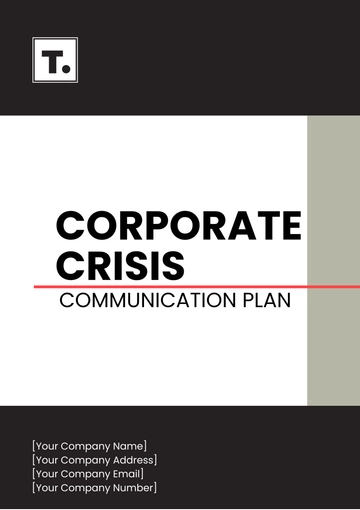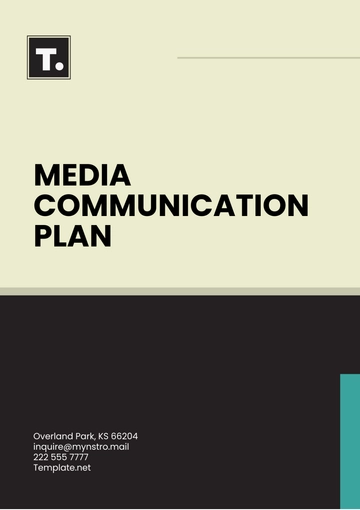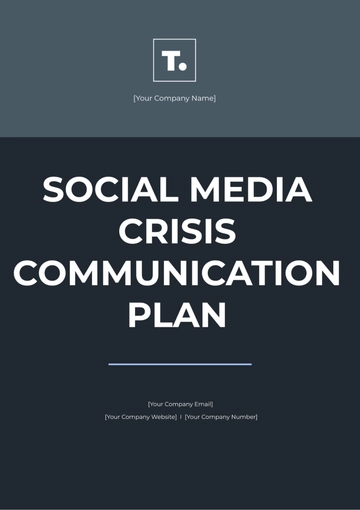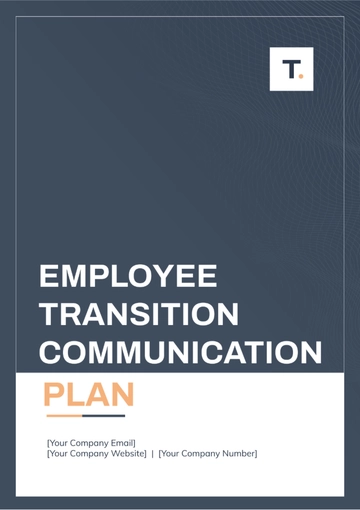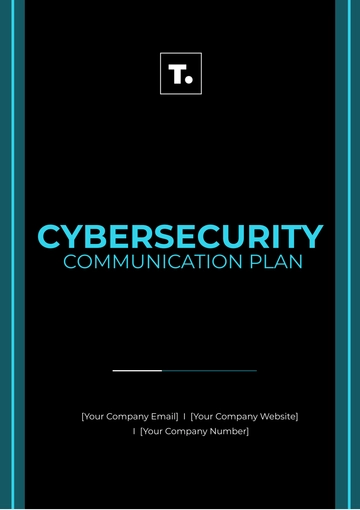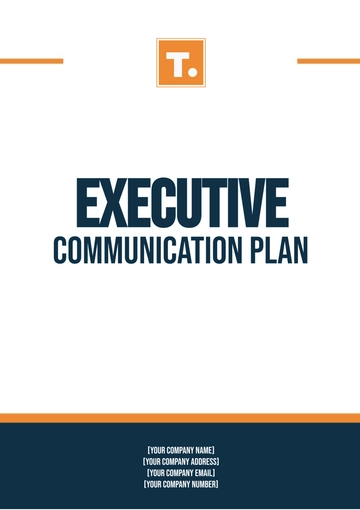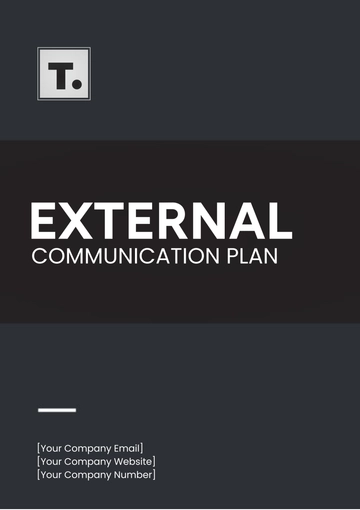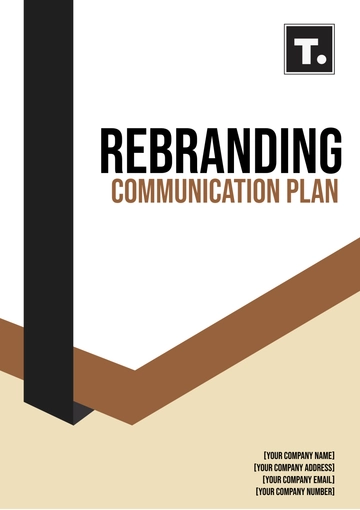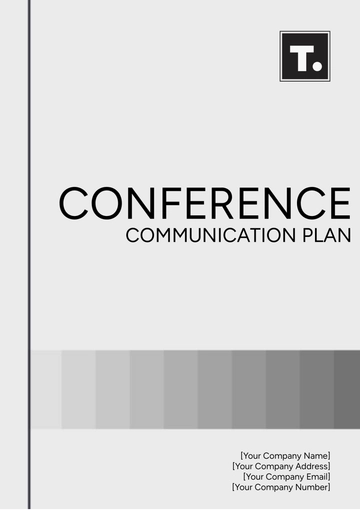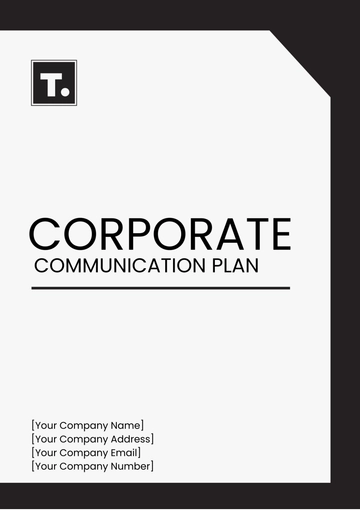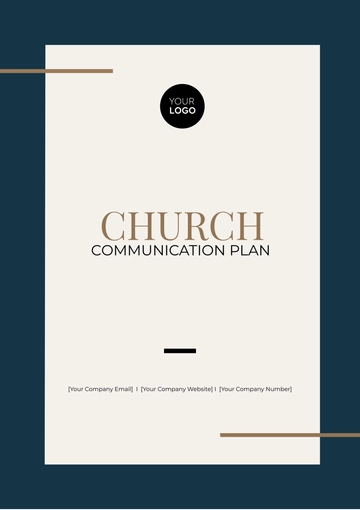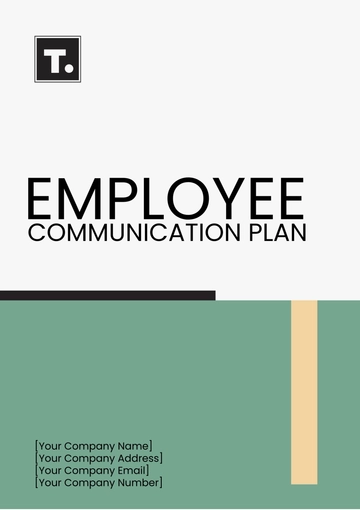Free Administration Stakeholder Communication Plan

1. Executive Summary
At [Your Company Name], our mission to deliver exceptional value to our customers and stakeholders guides everything we do. This Administration Stakeholder Communication Plan outlines our strategic approach to engaging with our diverse group of stakeholders, including employees, customers, suppliers, regulatory bodies, and the community at large. Our aim is to ensure transparent, timely, and effective communication that supports our strategic objectives, fosters collaboration, and builds trust across all levels of our organization and beyond. Through this plan, we commit to keeping stakeholders informed, listening to their feedback, and adapting our strategies to meet their needs and expectations.
2. Stakeholder Analysis
Identification of Stakeholders:
Stakeholder Group | Description |
|---|---|
Employees | Our workforce across all departments and levels |
Customers | Individuals and businesses that use our products and services |
Suppliers | Companies and individuals that provide goods and services to us |
Regulatory Bodies | Government agencies and entities that regulate our industry |
Community | The local and global community where we operate |
Stakeholder Mapping:
Stakeholder Group | Interest | Influence | Impact |
|---|---|---|---|
Employees | High | High | High |
Customers | High | Medium | High |
Suppliers | Medium | Low | Medium |
Regulatory Bodies | High | High | High |
Community | Medium | Low | Medium |
Needs Assessment:
Employees: Require clear, consistent communication about company updates, job security, and opportunities for growth.
Customers: Seek information on product updates, service improvements, and customer support.
Suppliers: Need timely communication on order forecasts, payment processes, and contract negotiations.
Regulatory Bodies: Demand compliance updates, regulatory changes, and audit results.
Community: Interested in corporate social responsibility initiatives, environmental impact, and local engagement activities.
3. Communication Goals and Objectives
Goal | Objectives |
|---|---|
Goal 1: Enhance stakeholder engagement and satisfaction by 25% within the next fiscal year. | Objective 1.1: Increase employee engagement scores by implementing monthly town hall meetings. Objective 1.2: Improve customer satisfaction ratings through quarterly surveys and feedback mechanisms. |
Goal 2: Ensure 100% compliance with regulatory communication requirements. | Objective 2.1: Establish a regulatory update newsletter to be distributed bi-monthly to relevant stakeholders. |
4. Key Messages
Stakeholders | Message |
|---|---|
To Employees | "Your commitment drives our success. We are dedicated to fostering an inclusive, transparent, and growth-oriented workplace." |
To Customers | "Your satisfaction is our priority. We continuously strive to innovate and improve our products and services to meet your needs." |
To Suppliers | "Our partnership is invaluable. Together, we can achieve excellence in supply chain efficiency and sustainability." |
To Regulatory Bodies | "We are committed to compliance, integrity, and transparency in all our operations." |
To Community | "We are more than a business; we are a responsible community member committed to making a positive impact." |
5. Communication Channels and Tools
At [Your Company Name], recognizing the diversity of our stakeholders' communication needs and preferences is paramount. To address this, we employ a multifaceted communication strategy, leveraging both traditional and digital channels to ensure our messages are effectively disseminated and received.
For internal communication, we prioritize a blend of digital and personal interactions. Our monthly email newsletters serve as a cornerstone, delivering company news, updates, and opportunities directly to our employees' inboxes. Utilizing sophisticated email marketing software, we're able to track engagement through open rates and interactions, allowing us to continually refine our approach. Our intranet platform acts as a central hub for all things [Your Company Name], hosting news posts, forums for discussion, and essential documents and resources. Its effectiveness is enhanced by regular content updates and the encouragement of employee contributions, fostering a vibrant internal community.
Recognizing the value of face-to-face communication, we hold regular staff meetings within teams and across departments. These meetings, supported by video conferencing software for remote participants, are structured around a clear agenda, with a dedicated segment for feedback to ensure all voices are heard. Furthermore, our annual retreats offer a unique opportunity for team building, strategic planning, and open dialogue in a setting away from the daily demands of the office. Planned with input from our employees and managed with event software, these retreats are a highlight of our internal communication efforts.
Externally, press releases are a critical tool for communicating significant company news, product launches, and achievements to the broader public. By partnering with distribution services that target relevant media outlets and influencers, we ensure our news reaches the right audiences. Our presence on social media platforms like LinkedIn and Twitter allows us to engage directly with customers, industry peers, and the community at large. Through the use of social media management tools, we maintain a balanced content calendar that promotes interaction and brand visibility.
Customer newsletters are another key component of our external communication strategy. By segmenting our audience and personalizing content, we aim to provide valuable updates, service improvements, and exclusive offers that resonate with our customer base. Feedback and behavioral data are instrumental in refining our approach to these communications.
Additionally, we host public forums and town halls as platforms for engagement with the wider community. These events, whether virtual or in-person, are promoted across various channels to ensure broad participation. They offer a space for open dialogue, feedback, and discussion on company initiatives, allowing us to address concerns and showcase our commitment to transparency and community involvement.
6. Communication Activities and Timeline
At [Your Company Name], our approach to stakeholder communication is both strategic and dynamic, ensuring that we engage effectively across various channels and platforms. This section outlines our planned communication activities and the timeline for their implementation, providing a roadmap for our engagement with different stakeholder groups throughout the year.
Internal Communication:
Our internal communication strategy is designed to keep our employees informed, engaged, and motivated. We will utilize monthly email newsletters to share company news, updates, and opportunities, leveraging email marketing software to analyze engagement levels. The company intranet will serve as a central hub for all internal communications, updated regularly with news posts, forums, and essential documents. Staff meetings will be held weekly within teams and departments, supported by video conferencing software to include remote participants. Additionally, an annual retreat will be organized to foster team building and strategic planning, with event management software aiding in logistical planning. These retreats will be an invaluable opportunity for open discussion and feedback in a relaxed setting, away from daily work pressures.
External Communication
Externally, we aim to maintain a transparent and proactive dialogue with our customers, suppliers, regulatory bodies, and the broader community. Press releases will be issued to announce significant company news, product launches, and achievements, utilizing distribution services to reach relevant media outlets. Our social media presence on platforms like LinkedIn and Twitter will be enhanced through regular, engaging posts and active participation in industry-related discussions, managed via social media software tools. Customer newsletters will provide regular updates on product developments, service improvements, and exclusive offers, personalized through segmentation techniques. Public forums and town halls will be organized quarterly to engage with the community and stakeholders, discussing company initiatives, gathering feedback, and addressing concerns, facilitated by virtual event platforms for online sessions and physical venues for in-person events.
Timeline
The communication activities are designed to provide consistent and meaningful engagement with all stakeholders throughout the year. Email newsletters, staff meetings, and social media posts will be ongoing activities, with special events like the annual retreat and public forums planned well in advance to ensure maximum participation and impact. The timeline will be flexible, allowing us to respond to emerging opportunities or challenges and to incorporate stakeholder feedback into our communication strategy continuously.
7. Roles and Responsibilities
To ensure the successful implementation of the [Your Company Name] Administration Stakeholder Communication Plan, the following roles and responsibilities have been assigned:
Role | Responsibility |
|---|---|
Chief Communication Officer (CCO) | Responsible for the strategic direction and overall effectiveness of stakeholder communications. The CCO will oversee the development and execution of the communication plan, ensuring alignment with the company's strategic goals. |
Internal Communications Manager | Focuses on crafting and disseminating information to employees across all departments. This role is crucial for maintaining morale, engagement, and transparency within the company. |
Customer Relations Manager | Acts as the primary liaison between the company and its customers, ensuring that all communication enhances customer satisfaction and loyalty. |
Supplier Relations Manager | Manages communication with suppliers to foster strong, reliable, and ethical supply chain relationships. |
Regulatory Affairs Specialist | Ensures that all communication with regulatory bodies is accurate, timely, and compliant with legal and regulatory requirements. |
Community Relations Manager | Develops and implements initiatives that enhance the company's presence and positive impact within the community. |
8. Budget
The budget that has been decided to be used in the implementation of the communication plan is set to be distributed for various activities and requirements that are necessary for its execution. The chief areas where the funding is intended to be used include, but not limited to, the procurement of communication tools as well as platforms which will be used to stream the messages effectively to the concerned parties. In addition to these, a significant portion of the budget is also likely to be directed towards hosting events which play a crucial role in enhancing communication areas. The development and creation of content is also another factor that will be catered to in the allocated budget, due to the importance it holds in communication strategies. Additionally, services that are going to be acquired from external consulting firms will also be covered in the said budget. To ensure that the budget is being appropriately utilized and is in accordance with the strategic priorities and financial constraints, a comprehensive budget is to be established. This budget will be under periodic review on a quarterly basis. This is in order to ensure that the spent aligns with the overall objectives, and that the financial restrictions are taken into account during the process.
9. Monitoring and Evaluation
To assess the effectiveness of our communication activities, we will use a combination of qualitative and quantitative metrics:
Engagement Scores: Through surveys and digital analytics, measure how actively stakeholders engage with our communications.
Satisfaction Ratings: Use feedback tools and surveys to gauge stakeholder satisfaction with our communication efforts.
Compliance Rates: For regulatory communications, track our adherence to reporting deadlines and requirements.
Feedback Analysis: Regularly review stakeholder feedback to identify common themes, questions, or concerns that need to be addressed.
Evaluation will occur on a quarterly basis, with annual reviews to adjust the communication plan as needed. These reviews will involve all key stakeholders in the communication process to ensure a comprehensive understanding of successes and areas for improvement.
10. Contingency Planning
Recognizing the potential for unforeseen challenges, we have developed the following contingency plans:
Technological Failures: Establish manual communication processes and backup systems for critical communication tools. Regularly update and test disaster recovery plans.
Miscommunication: Implement a clear protocol for rectifying misinformation, including timely public corrections and internal briefings to ensure all team members are informed.
Data Breaches: Develop a crisis communication plan specifically for breaches, including immediate notification procedures, transparent communication with affected parties, and steps taken to prevent future incidents.
Regulatory Changes: Maintain a flexible approach to regulatory communication, with a dedicated team responsible for monitoring changes and developing swift responses.
- 100% Customizable, free editor
- Access 1 Million+ Templates, photo’s & graphics
- Download or share as a template
- Click and replace photos, graphics, text, backgrounds
- Resize, crop, AI write & more
- Access advanced editor
Maximize your stakeholder engagement with Template.net's Administration Stakeholder Communication Plan Template. This tool offers unparalleled customization and editing capabilities through our Ai Editor Tool, enabling you to craft precise communication strategies tailored to your stakeholders' needs. Enhance your relationship management and ensure your messaging is clear, effective, and impactful with our professional template.
